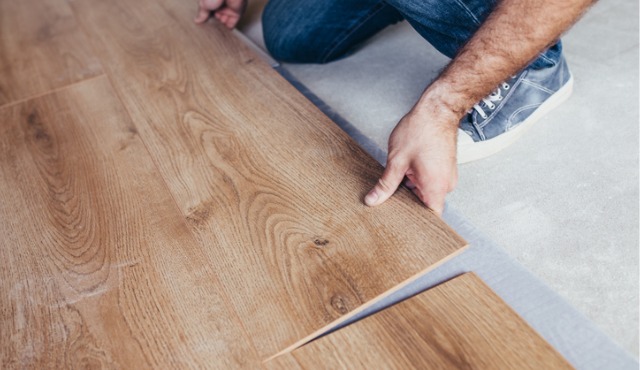By Brooke Chaplan
Hardwood flooring is one of the most popular flooring options among homeowners. It brings a timeless and elegant look to your home and increases your home's resale value. However, installing hardwood flooring can be a real challenge, especially if you are a DIY enthusiast.
Here's everything you need to know about installing hardwood flooring in your home.
Choose the Right Type of Hardwood Flooring
The first step in installing hardwood flooring is choosing the right type of flooring. There are two main types of hardwood flooring: solid wood flooring and engineered wood flooring. Solid wood flooring is made of solid wood planks and is best for high-traffic areas. Engineered wood flooring is made of several layers of wood and is more resistant to moisture.
You should also consider the wood species, color, and style of flooring that you want. Some popular wood species include oak, maple, and cherry. You can choose from different types of finishes, such as glossy and matte, to match your home's style.
Prepare the Subfloor
Before you can install hardwood flooring, you need to prepare the subfloor. The subfloor should be clean, flat, and dry. If your subfloor is made of concrete, you need to install a vapor barrier to prevent moisture from seeping through the concrete.
If your subfloor is uneven, you can use a leveling compound to even it out. You should also remove any old flooring or carpeting, as they can affect the hardwood flooring's durability.
Install the Hardwood Flooring
Once the subfloor is ready, you can start installing the hardwood flooring. The first step is to lay the vapor barrier if needed. Then, you can start laying the flooring planks by nailing or gluing them down.
To achieve a professional look, you should stagger the planks and leave a small gap between them for expansion. You can use a flooring nailer or stapler to secure the planks to the subfloor.
Sand and Finish the Hardwood Flooring
After installing the flooring, you need to sand and finish it. Sanding removes any rough spots or scratches on the flooring and prepares it for the finish. You can use a drum sander or a random orbital sander to sand the floor.
Once you've sanded the floor, you can apply the finish. There are different types of finishes, such as polyurethane and oil-based finishes. You should apply at least three coats of finish to protect the flooring.
Maintain the Hardwood Flooring
Maintaining hardwood flooring is crucial for its durability and longevity. You should avoid using water to clean the flooring, as it can damage the finish and the wood. Instead, use a dry mop or a vacuum to remove dirt and debris.
You should also avoid exposing the flooring to direct sunlight, as it can cause the wood to fade. Use window treatments to block the sun's rays and protect the flooring.
Installing hardwood flooring is a significant investment, but it can bring a lot of benefits to your home. By choosing the right type of flooring, preparing the subfloor, installing the flooring correctly, and maintaining it, you can enjoy the beauty and durability of hardwood flooring for years to come. Follow the steps outlined in this guide, and you'll have a professional-looking floor that you can be proud of.
Brooke Chaplan is a freelance writer and blogger. She lives and works out of her home in Los Lunas, New Mexico. She suggests contacting local hardwood flooring specialists for any tips or help in the installation process. For more information, contact Brooke via Twitter @BrookeChaplan.








